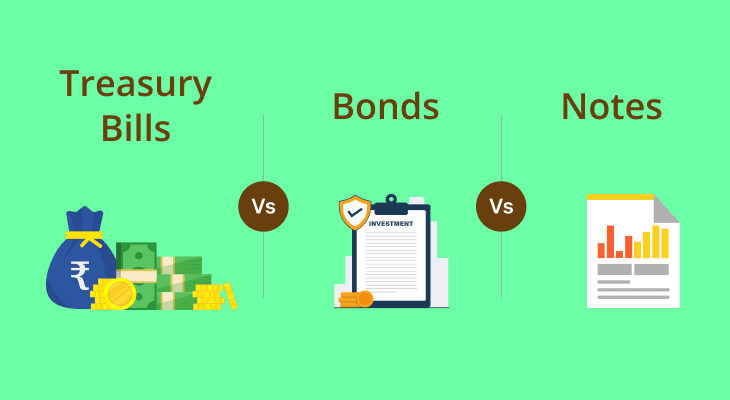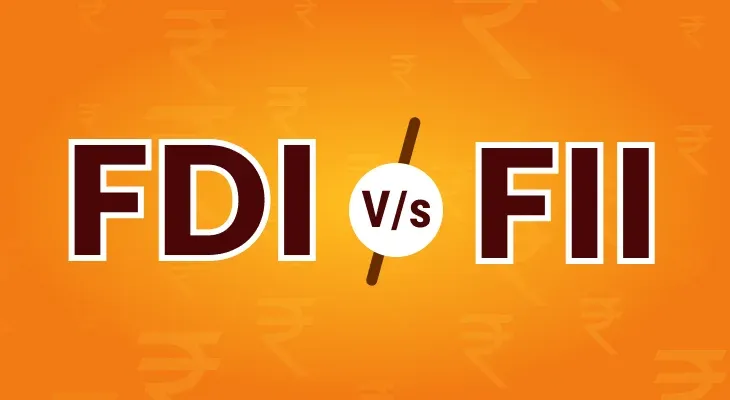
Treasury Bills vs. Bonds vs. Notes: What’s the Difference?
With more choice comes greater dilemmas. The wide range of investment options in the debt category creates more opportunities but can also lead to confusion. It is not always easy to determine what suits your needs, and selecting the right option can be tricky. However, understanding the differences can make the decision clearer. This article explores the distinctions between three key debt instruments - Treasury bills, Treasury bonds, and Treasury notes.
What are Treasury bills?
Treasury bills, or T-bills, are a type of Government Security (G-Sec) issued by the Government of India through the Reserve Bank of India (RBI). They are short-term investment options with maturities of less than a year. Treasury bills are sold at a discount to their face value, which allows you to buy them for less than their actual worth and earn a profit when they mature at full value.
What are Treasury bonds?
Treasury bonds, also known as government bonds, are long-term debt instruments issued by the central government of India. When you invest in these bonds, you lend money to the government for a fixed period. In return, you receive regular interest payments at either a fixed or variable rate until the bond matures.
What are Treasury notes?
Treasury notes are government debt securities that pay interest at a fixed rate. The interest rate is decided on the basis of market demand and supply. When you invest in Treasury notes, you receive periodic interest payments every six months until the note reaches maturity.
Note: The Indian government does not issue Treasury notes. They are available in the United States.
Key differences between Treasury bills, Treasury bonds, and Treasury notes
Sr. no. | Points of difference | Treasury bills | Treasury bonds | Treasury notes |
1. | Interest rate | Treasury bills do not offer a fixed interest rate. Instead, they are issued at a discount, which allows you to purchase them for less than their face value and earn a profit when they mature. | Treasury bonds can have either a fixed or variable interest rate. For example, fixed-rate bonds offer fixed returns throughout their tenure, while Floating Rate Bonds (FRBs) have interest rates that adjust periodically based on market conditions. Some government bonds, such as capital-indexed bonds, have their principal amount linked to inflation. | Treasury notes have a fixed interest rate that is determined at the time of issuance. |
2. | Maturity | Treasury bills are short-term securities with three available maturity periods - 91 days, 182 days, and 364 days. | Treasury bonds are long-term securities with maturities of 20 or 30 years. | Treasury notes have a maturity period ranging from 2 to 10 years. |
3. | Associated risks | Treasury bills may carry inflation risk, as their returns may not always keep pace with rising prices. | Treasury bonds can be subject to inflation risk, interest rate risk, and reinvestment risk. | Treasury notes can face interest rate risk. Additionally, inflation risk can reduce the purchasing power of their returns. |
4. | Use | Treasury bills are suitable for short-term needs or to park excess money. | Treasury bonds are suitable for long-term financial needs. | Treasury notes are suitable for mid to long-term financial needs. |
Treasury bonds vs Treasury bills - Which one is right for you?
The right choice depends on your financial needs and investment goals.
If you are looking for a short-term investment option or a place to park your excess funds, Treasury bills might be a suitable option. Since they are issued at a discount and redeemed at face value, your returns are predictable at the time of purchase, and you do not have to worry about fluctuating interest rates. With shorter maturities of 91, 182, or 364 days, Treasury bills are also highly liquid and suitable if you need quick access to your funds in the next year.
Treasury bonds are suitable for long-term financial goals. They offer regular interest payments, which may be fixed or floating. However, their market value may fluctuate based on interest rate changes.
How can you invest in Treasury bills and Treasury bonds?
Here’s how you can invest in Treasury bills and Treasury bonds:
- Treasury bills: You can invest in Treasury bills through the RBI Retail Direct platform, which allows you to participate in the auction process conducted by the RBI. This option lets you purchase Treasury bills directly from the government without intermediaries. Alternatively, you can open a Demat and trading account and buy and sell Treasury bills on stock exchanges.
- Treasury bonds: Much like Treasury bills, you can invest in Treasury bonds through the RBI Retail Direct platform or buy and sell them on stock exchanges using a Demat and trading account. Additionally, you can invest indirectly through gilt mutual funds, which primarily invest in Treasury bonds.
Conclusion
The Treasury bonds vs bills debate can seem confusing since both these instruments are backed by the government and fall under the debt category. However, each serves a distinct purpose, and understanding their differences can help you choose the right investment option based on your financial goals.


